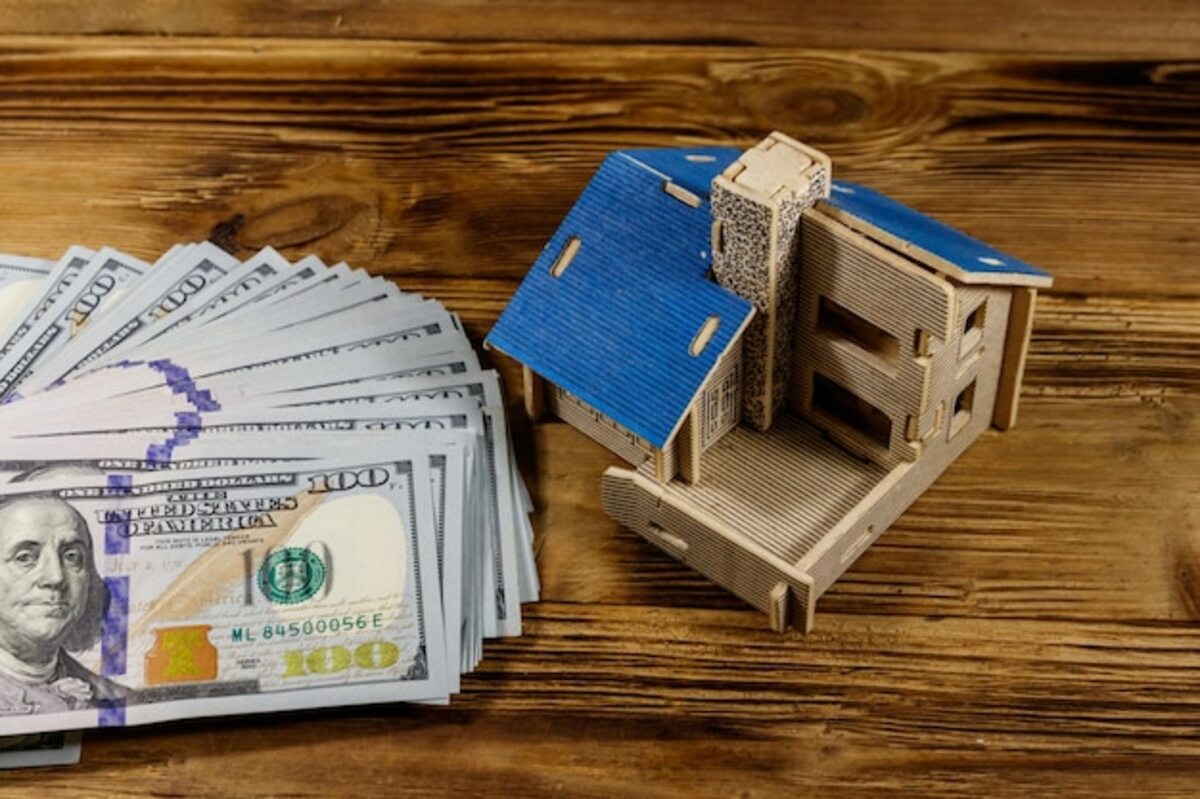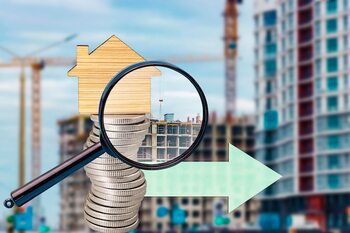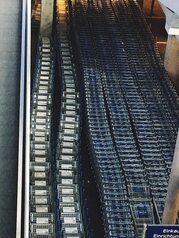The influence of commerce on the appreciation of your property

The location of your property is a crucial factor that determines its appreciation, and commerce plays a fundamental role in this process. In this article, we will explore how proximity to shopping centers, stores, and services can significantly increase the value of your home. If you want to maximize your real estate investment, understanding the influence of commerce on appreciation is essential. Join me on this journey to discover how you can benefit from this relationship and make informed decisions about your property.
1. The connection between trade and surplus value: how does it work?
The connection between commerce and added value is a fundamental aspect of the real estate market. When a property is located near shopping centers, supermarkets, restaurants, and other services, its appeal increases considerably. This proximity not only facilitates the daily lives of residents but also creates a perception of comfort and convenience that buyers value. As a result, properties located in commercial areas tend to experience an increase in demand, which directly translates into a rise in their added value. Moreover, the development of new commercial infrastructures is often an indicator of economic growth in a region. As more businesses establish themselves in an area, they attract more people and investments, generating a virtuous cycle that benefits local homeowners. This phenomenon can lead to a revitalization of the area, boosting not only the value of the individual property but also that of the entire neighborhood. Therefore, understanding how commerce influences added value is key for those looking to maximize their investment and secure a prosperous future for their home.
2. Types of businesses that most influence the value of your property
The businesses that most influence the value of a property are those that offer convenience and accessibility to residents. Among them, shopping centers are key, as they not only provide a wide variety of stores and services but also often include recreational areas and dining options. Proximity to a shopping center can make a property more attractive to families and young professionals, which in turn can translate into an increase in market price. Additionally, the presence of nearby supermarkets and pharmacies ensures that the daily needs of residents are met, which is a significant attraction for potential buyers.
Another type of commerce that significantly impacts property value is specialized shops and unique local stores. Boutique coffee shops, artisanal bakeries, and organic product stores can create a vibrant atmosphere in the community, attracting both residents and visitors. These unique offerings not only enhance the quality of life for those living nearby but also generate a sense of belonging and connection to the neighborhood. The accumulation of these small businesses is often indicative of an area in development or revitalization, which can considerably elevate the perceived value of surrounding properties. Together, all these factors create a positive synergy that benefits both merchants and property owners.
3. The impact of commercial developments on residential areas
Commercial developments in residential areas can radically transform the environment of a community, which in turn impacts the value of surrounding properties. The arrival of new businesses and services, such as supermarkets, restaurants, and entertainment centers, not only makes daily life easier for residents by providing accessible options but also attracts potential new buyers. This dynamic can create a multiplier effect on property value, as areas with good commercial offerings are often seen as more desirable. Therefore, a home located near a well-established shopping center may experience a significant increase in its appreciation over time.
In addition to the direct increase in property values, commercial developments can influence other important aspects of the neighborhood. For example, the creation of local jobs generates a steady flow of people to the area, contributing to the economic vitality of the region and fostering greater investment from the private sector. Furthermore, it is estimated that well-planned commercial infrastructure enhances the quality of life by providing access to essential resources and recreational activities. This attractive environment can lead current homeowners to decide to stay in their homes longer, thus creating additional demand that further drives up prices. In summary, commerce is not only an economic engine; its presence also plays a key role in defining the perception and real value of your property within the real estate market.
4. Case studies: properties before and after new businesses
An analysis of properties before and after the opening of new businesses reveals clear patterns on how these facilities can transform real estate value in an area. For example, in a neighborhood that previously lacked basic services, the arrival of a supermarket and a pharmacy may have increased not only interest in buying homes but also prices by a significant percentage. Homeowners who had purchased their houses years earlier at lower prices found an increase in their equity, resulting in considerable gains when selling or renting their properties. This phenomenon is due to new businesses attracting more residents and visitors, creating greater demand for nearby housing.
It is also interesting to observe how the type of commerce influences the value of the property. In areas where boutiques and gourmet restaurants have been established, properties have seen an even greater increase in their valuation. This is because these businesses not only offer convenience but also enhance the quality of life in the neighborhood by attracting a more diverse and sophisticated audience. Commercial investments are often accompanied by urban improvements such as parks or renovated public spaces, which are appealing to potential buyers and tenants. Therefore, understanding how the opening of new businesses can positively impact the immediate environment is key for any property owner or investor interested in maximizing their economic return.
5. How to evaluate proximity to shops when buying a house
When evaluating proximity to stores when buying a house, it is essential to consider not only the number of shops and services available but also their quality and variety. A neighborhood that has supermarkets, pharmacies, restaurants, and entertainment centers can offer a more convenient and appealing lifestyle for potential buyers. This not only enhances the daily experience of residents but also increases demand for properties in that specific area. By analyzing these features, you can determine if the location will provide you with long-term appreciation.
Additionally, it is important to research how commercial development has historically affected the area. Some areas may experience accelerated growth due to new commercial projects or infrastructure expansions that attract more businesses. However, it is also essential to be aware of potential market saturation or changes in business trends that could negatively impact your property's value in the future. By conducting a thorough analysis of proximity to businesses, you will be able to make more informed and strategic decisions in your real estate investment.
6. Strategies to increase added value through local commercial development
To increase the value of your property through local commercial development, it is essential to identify areas where investments in infrastructure and commerce are being made. The arrival of new businesses, such as supermarkets, restaurants, and entertainment centers, can attract more residents and potential buyers to the area. Actively participating in the community and supporting local initiatives can position you as a valuable ally in the development process, thereby creating a favorable environment for businesses to thrive. This not only benefits merchants but also improves the quality of life in the neighborhood and enhances the overall appeal of nearby properties.
Another effective strategy is to collaborate with local associations or chambers of commerce to promote community events that highlight the best of the area. These activities can attract both residents and visitors, fostering a sense of belonging and social cohesion that elevates interest in the zone. Additionally, by giving visibility to local businesses and their unique offerings, a dynamic ecosystem is created that can make your property even more desirable. Remember that a vibrant community with a good commercial offering not only increases the value of your home but also makes it an attractive place to live and invest in the future.
7. The importance of access to basic services and its effect on real estate value
Access to basic services such as water, electricity, public transportation, and healthcare is essential for the quality of life of residents, and their availability can directly impact the real estate value of a property. Potential buyers often seek homes that provide comfort and convenience in their daily lives. Thus, a home located near schools, hospitals, and supermarkets becomes a more attractive option, which can translate into a significant increase in its value over time. Therefore, well-located properties not only offer immediate advantages to their owners but also represent a solid investment for the future.
In addition to proximity to essential services, transportation infrastructure plays a crucial role in real estate valuation. Properties near subway stations, bus stops, or expressways are often valued higher due to the convenience they offer for commuting to workplaces and leisure activities. This accessibility facilitates the daily movement of residents and can attract a larger number of buyers interested in living in dynamic urban areas. In this sense, a good connection with the rest of the city not only improves the quality of the residential environment but also enhances the economic prospects of the area, thereby generating greater demand from the real estate market.
8. Current trends: what are buyers looking for in commercial terms?
Currently, property buyers are increasingly interested in the convenience and accessibility offered by nearby commerce. They seek not only homes but also a lifestyle that allows them to enjoy essential services just a few steps from their door. This includes supermarkets, restaurants, health centers, and entertainment options. Proximity to these amenities not only enhances quality of life but also translates into greater appreciation for properties located in areas with robust commercial infrastructure. Therefore, developers and owners must consider these trends when positioning their properties in the market. Furthermore, there is a growing interest in commercial spaces that promote a sense of community and sustainability. Buyers increasingly value environments where they can find local markets, independent shops, and green spaces integrated with commercial areas. This trend reflects a shift towards a more conscious and responsible consumption model. Investing in properties close to these types of businesses can not only be attractive to potential buyers but also ensure long-term real estate value appreciation due to the increasing demand for this type of dynamic urban environment.
9. Common myths about trade and surplus value that you should know.
Over time, various myths have emerged regarding the relationship between commerce and property value that can lead to confusion when evaluating a property. One of the most common myths is the belief that an increase in the number of stores or shopping centers will automatically raise the value of all nearby properties. However, the reality is more nuanced; it is not only about quantity but also about the quality and type of businesses present. The arrival of a shopping center could be beneficial for certain properties, but it could negatively impact others, especially if they are located in noisy or traffic-congested areas. Another frequent myth is the assumption that being close to a business guarantees high property value in the long term. While proximity to services can offer convenience and initial appeal, factors such as area maintenance, safety, and real estate market trends play crucial roles in determining actual value. Therefore, it is essential to research and analyze not only what is around but also how that area evolves over time. Understanding these myths will allow you to make more informed and strategic decisions about your real estate investment, thereby maximizing its potential in the market.



